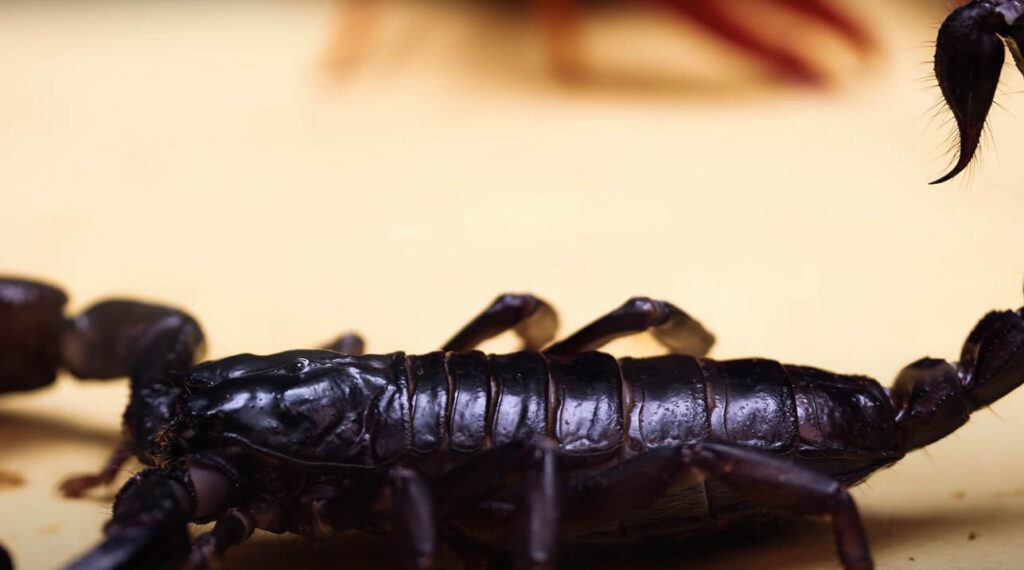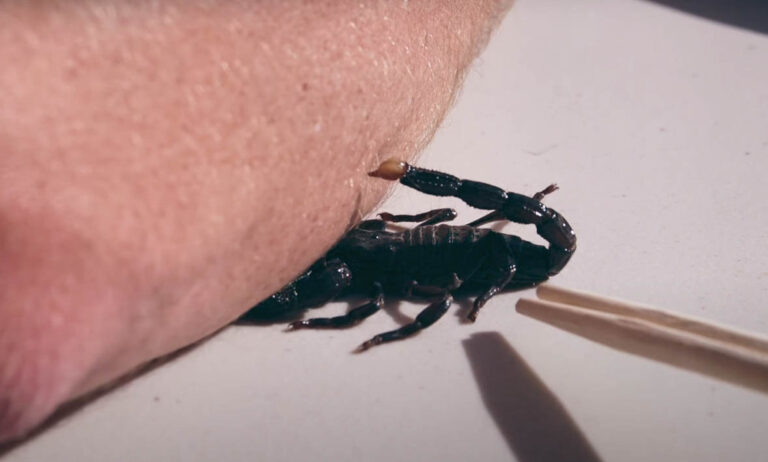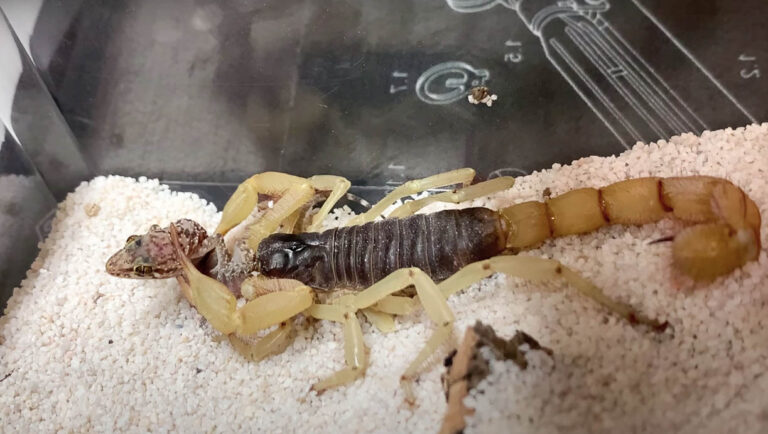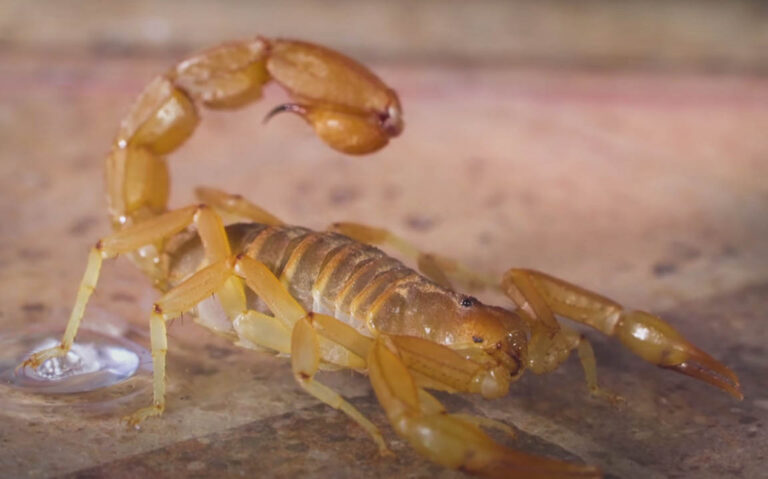A guide on different types of scorpions
A Guide on Different Types of Scorpions
Scorpions are found in practically every continent and landmass on Earth. The only exception is the frosty reaches of Canada, Siberia, Northern Europe, and, of course, Antarctica. Due to this geographical diversity, scorpions come in a wide variety of shapes, colors, and sizes. At present, there are around 1,750 living species of scorpions. So, covering them in a single guide is a little tricky. However, we’ll cover the most common and notable scorpions in the world.
Arizona bark scorpion
The Arizona bark scorpion is one of the most dangerous creatures in all of North America. It has light tan coloring, and as the name suggests, it can be found in the southwestern US. On average, they are around 8 cm (3.1 in) in length. The venom of the Arizona bark scorpion is rarely deadly, although it has killed two people in Arizona since 1968. Instead, victims report severe pain lasting between 24 to 72 hours. Limbs can be immobilized, and convulsions can occur.

Emperor scorpion
One of the biggest scorpions in the world, emperor scorpions measures an average of 20 cm (7.9 in) in length. Their bodies are a shiny black color, though under UV light they glow pastel green or blue. Unlike the Arizona bark scorpion, emperor scorpions aren’t particularly venomous. This difference highlights a key rule of thumb: the larger the claws, the less powerful the stinger. Still, it’s best to avoid antagonizing one.
Arizona hairy scorpion
Another local of the US southwest, the Arizona hairy scorpion looks similar to its neighbor. However, it can be distinguished by the brown hairs covering its body. The scorpion is one of the larger North American species, growing up to 14 cm (5.5 in) in length. Due to its large stature, it often preys upon other scorpions, and will even eat lizards and snakes. It isn’t particularly venomous being comparable to a honeybee sting. However, allergic reactions to the venom can be fatal.
Striped bark scorpion
These scorpions are extremely common in the central US and down into Mexico. Their dark brown body, with stripes running down their back, make them perfectly camouflaged for their environment. At their largest, they grow to around 70 mm (2 ¾ in) in length. They have two long forelimbs with pincers, but their tail and stinger shouldn’t be dismissed. Every year, thousands are stung by striped bark scorpions. The sting isn’t usually deadly; however, it is excruciating. Symptoms include severe pain, muscle spasms, and numbness. However, other similar species can be deadly, so medical attention should be sought.

Yellow ground scorpion
Found throughout the US, Central America, and up into western Canada. As per their namesake, they are a light tan to brownish color, with a long slender body and legs. They are often misidentified as the Arizona bark scorpion, due to their slender bodies. However, they are a different species, being notable for having a wider body. They are found in similar areas, though.
Blue scorpion
Known in Cuba as ‘alacran azul’, the blue scorpion is endemic to North America, South America, and throughout Africa. They are often found under bark and stones in forest environments. They are famed for hunting down tarantulas, but will also feed on crickets and termites. Their venom is quite potent, causing arrhythmias, low or high blood pressure, and may even lead to fluid in the lungs. They are most notable for their blue coloring. However, they can come in a range of colors from red to dark brown.






